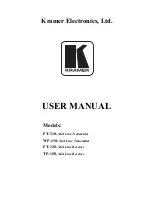
TK-2317
30
ADJUSTMENT
Frequency and Signaling
The transceiver has been adjusted for the frequencies
shown in the following table. When required, re-adjust them
following the adjustment procedure to obtain the frequencies
you want in actual operation.
■
Frequency (MHz)
Channel No.
RX Frequency
TX Frequency
1
220.05000 220.10000
2
216.05000 216.10000
3
222.95000 222.90000
4
220.00000 220.00000
5
220.00000 220.20000
6
220.40000 220.40000
7~16
-
-
■
Signaling
Signaling No.
RX (Decode)
TX (Encode)
1
None
None
2
None
100Hz Square Wave
3
QT 67.0Hz
QT 67.0Hz
4
QT 151.4Hz
QT 151.4Hz
5
QT 210.7Hz
QT 210.7Hz
6
QT 254.1Hz
QT 254.1Hz
7
DQT D023N
DQT D023N
8
DQT D754I
DQT D754I
9
DTMF (Code: 159D)
DTMF (Code: 159D)
10
None
DTMF (Code: 9)
11
None
MSK (1010)
12
FleetSync (100~1000)
FleetSync (100~1000)
13
None
Single Tone (1000Hz)
14
2-tone (A: 304.7Hz,
B: 3106.0Hz)
2-tone (A: 304.7Hz,
B: 3106.0Hz)
15
None
DTMF Tone (1477Hz)
16
Single Tone (979.9Hz)
Single Tone (979.9Hz)
17
None
MSK PN9
18
None
DTMF (Code: 3)
Preparations for Tuning the Transceiver
Before attempting to tune the transceiver, connect the
unit to a suitable power supply.
Whenever the transmitter is tuned, the unit must be con-
nected to a suitable dummy load (i.e. power meter).
The speaker output connector must be terminated with a
8
dummy load and connected to an AC voltmeter and an
audio distortion meter or a SINAD measurement meter at all
times during tuning.
■
Adjustment frequency (MHz)
TEST CH
RX
TX
Low
216.05000 216.10000
Low’
218.05000 218.10000
Center
220.05000 220.10000
High’
221.05000 221.10000
High
222.95000 222.90000
Adjustment Points
TX-RX UNIT
Component side view
B
CVIN
Note: “CVIN” VCO Lock voltage.
















































